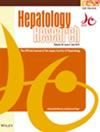Continuous Intravenous Infusion of Hepatocyte Growth Factor Promotes the Development of a Fibrolytic Phenotype in Hepatic Macrophages and Stellate Cells in a Rat Model of Bile Duct Ligation
Abstract
Aim
Liver cirrhosis is a severe condition that often progresses to the decompensated phase, highlighting the global urgency for the development of antifibrotic agents. Hepatocyte growth factor (HGF) strongly promotes liver regeneration and attenuates fibrosis. However, HGF has not been clinically applied to treat patients with liver cirrhosis. Here, we aimed to explore the antifibrotic effects and mechanism(s) of action of HGF, through continuous intravenous infusions, in rats with bile duct ligation (BDL).
Methods
Sprague–Dawley rats were subjected to BDL. Two weeks post-BDL, an intravenous catheter was inserted into the right jugular vein. After 1 week, the rats were randomized into different groups for continuous intravenous infusion of phosphate-buffered saline alone, HGF at 0.25 mg/kg/day, or HGF at 1.0 mg/kg/day. After 10 days of treatment, the rats were euthanized, and blood and liver tissues were collected for analysis.
Results
Continuous intravenous HGF infusion increased the serum albumin levels, decreased the alanine aminotransferase levels, preserved prothrombin time activity, ameliorated liver fibrosis and fibrosis-associated stellate cell activation, and significantly promoted hepatocyte proliferation in rats with BDL. HGF-MET signaling suppressed IL-6 expression and promoted matrix metallopeptidase 2 (MMP-2) expression in infiltrating macrophages in vivo and in human macrophage and hepatic stellate cell lines in vitro.
Conclusion
Continuous intravenous infusion of HGF attenuated BDL-induced liver fibrosis by decreasing IL-6 expression, increasing MMP-2 expression in macrophages and hepatic stellate cells, and inactivating hepatic stellate cells directly or indirectly. These findings offer valuable insights into developing novel HGF-based therapies for liver cirrhosis.


 求助内容:
求助内容: 应助结果提醒方式:
应助结果提醒方式:


